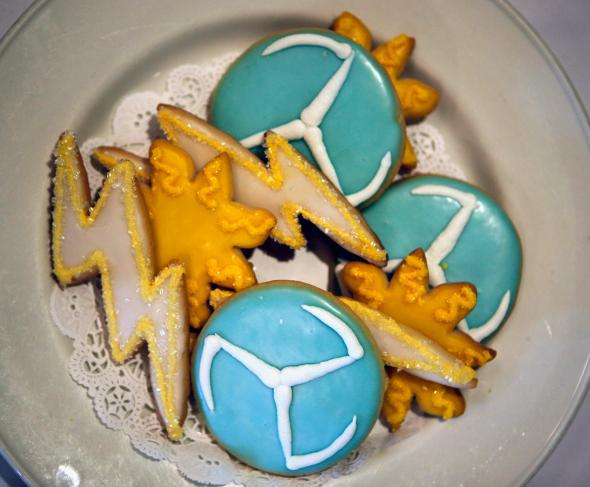Would you like to make cookies in the shape of “your dachshund, say, or the Yankees’ logo”? You have a few options. You could request a custom-made cookie cutter from Michigan-based business FrankenCutters. More simply, you could order a dog-themed cookie cutter from Etsy shop NameThatCookie, or Major League Baseball’s officially licensed set of three New York Yankees cutters from Amazon. If you’re handy with needle-nosed pliers, you could fashion your own cookie cutter out of aluminum sheets. Or, if you don’t mind a little variation among your cookies, you could simply cut silhouettes out of your cookie dough by hand using a knife.
Or—as the The New Yorker informs us this week—you could buy a 3-D printer, go to the website CookieCaster, “draw your cookie-cutter shape or ‘magic trace’ the outline of an uploaded image” (like a picture of said dachshund or Yankees logo), download the design to your computer, print the design with your 3-D printer, wrap it up with aluminum foil or cling wrap, and use that to cut out cookies. (The foil is necessary because objects made with personal 3-D printers aren’t food safe; however, CookieCaster “does not warrant” wrapping home-printed cookie cutters in foil or plastic wrap and states “you do so at your own risk.”)
What a tough decision! Wait, no—it’s not a tough decision at all. Given all the simpler alternatives, 3-D printing your own non-food-safe cookie cutters would be insane. Which, to be fair, might be vaguely implied by Emma Allen’s “Talk of the Town” profile of CookieCaster—Allen’s story follows the tried-and-true “Talk of the Town” formula of treating a very silly trend or phenomenon as though it were very serious for droll effect. Over the course of detailing the San Francisco office where CookieCaster was invented, Allen describes a lizard named Lizard of Oz, a coder who has invented “Uber for pizza,” and “and a sign, affixed to nothing, that read, ‘Plz Dont Take’”—readers don’t exactly come away with the impression that CookieCaster is about to take over the world.
But this New Yorker confection fails to convey just how ridiculous and unnecessary 3-D printed cookie cutters really are—both because home bakers already have multiple options for customized cookie cutters that are less of a hassle than 3-D printing, and, more importantly, because most custom-made cookie cutters are major disappointments. Elaborate cutters tend to yield cookies that look nothing like the thing they’re supposed to resemble, since cookies bulge and lose their definition when baked. Sure, hearts, stars, and stylized humanoid shapes are usually still identifiable when they emerge from the oven, but any more complicated shapes tend to get lost in translation. You’d need a fair amount of scrupulously applied icing to identify many of the shapes in CookieCaster’s gallery—and, alas, Silicon Valley hasn’t yet come up with a solution to the challenge of applying icing neatly and precisely. My advice, as always, is to abandon your efforts to make baked goods look perfect, and focus on making them taste good instead.
